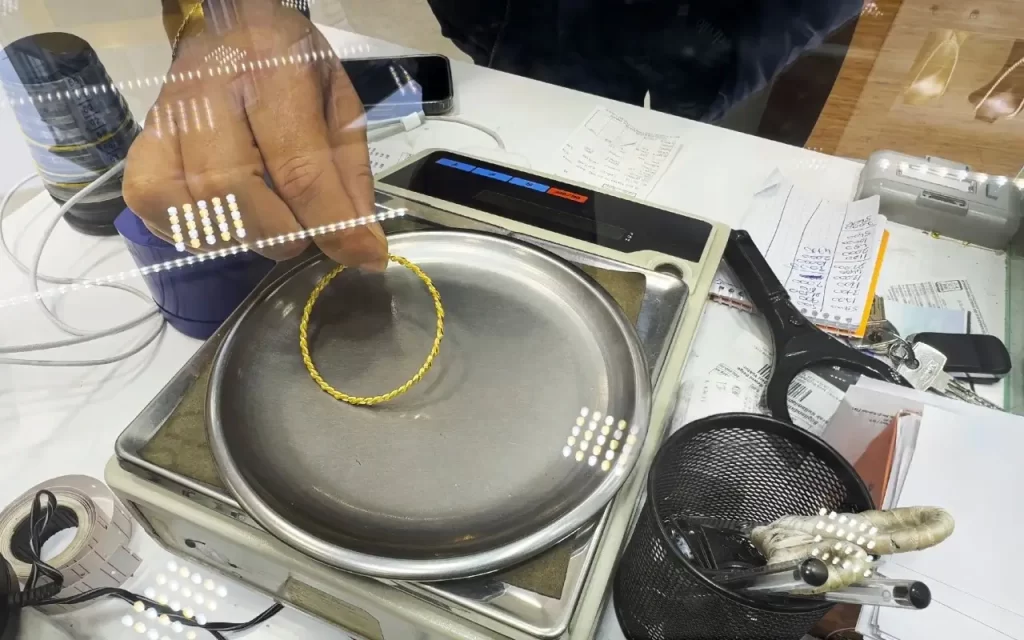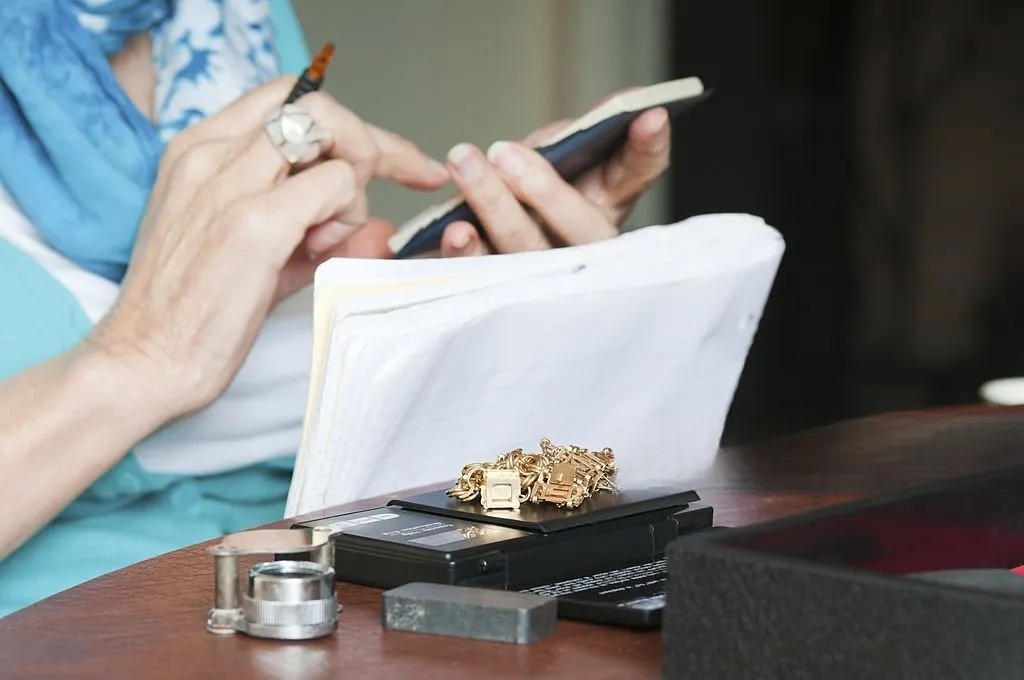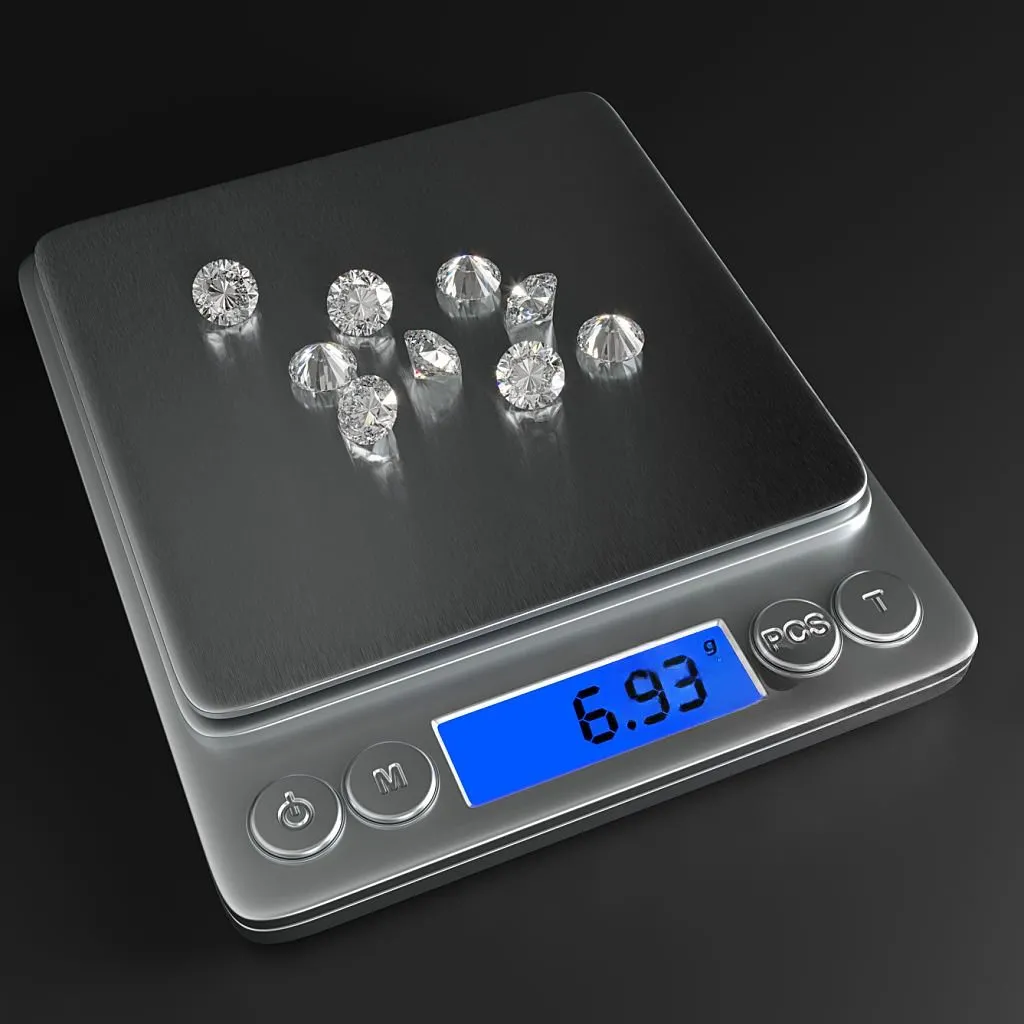In the jewelry business, getting your measurements right really impacts things. Whether you’re figuring out the value of precious metals and gemstones or making sure transactions are fair, even a tiny fraction of a gram or carat can change the outcome. If your jewelry scale isn’t calibrated, you might run into financial losses, a damaged reputation, and customers who lose trust. This article is your straightforward guide to mastering jewelry scale calibration, helping you ensure your measurements are always precise and reliable.

Understanding Jewelry Scales: What You Must Know Before Calibration
Before you start the calibration process, it helps to understand the basics of jewelry scales and what tools you’ll need.
Different Types of Jewelry Scales
Jewelry scales come in various forms, each designed for specific levels of precision:
- Milligram Scales (0.001g): These scales offer very high precision, accurate to a thousandth of a gram. They’re very useful when weighing tiny gemstones, powders, or high-value materials, as even small differences can have a noticeable impact.
- Gram Scales (0.01g or 0.1g): These scales measure in hundredths or tenths of a gram and are more commonly used for general jewelry weighing, like finished pieces, larger gemstones, or gold and silver.
- Carat Scales (0.005ct or 0.01ct): These scales are designed specifically for gemstones, measuring in carats, which is the standard unit of weight for diamonds and other precious stones. Given the high value of gemstones, accurate carat measurement is very important.
Each type of scale has different accuracy requirements, and consequently, different calibration weight needs.
Calibration Mode: Your Scale’s Gateway to Accuracy
Most modern digital jewelry scales feature a dedicated calibration mode. This mode is typically accessed by pressing and holding a specific button or a combination of buttons, such as “CAL,” “MODE,” or “UNIT.” When activated, the scale will usually display “CAL” or a flashing numerical value, indicating it’s ready for calibration. Always refer to your scale’s user manual for the exact sequence.
The Indispensable Role of Calibration Weights
The bedrock of accurate calibration lies in using certified, accurate calibration weights. These weights are manufactured to precise specifications and are verified for their exact mass.
- Why Certified Weights Are Non-Negotiable: You should never use everyday items like coins, paperclips, or common household objects instead of certified calibration weights. The weight of these items is inconsistent, often varies significantly, and can’t be measured accurately. Using them will lead to inaccurate calibration, which means incorrect measurements for your valuable jewelry. Investing in a set of certified calibration weights is a small price to pay for the peace of mind and financial security they provide.
- Choosing the Right Weight: Calibration weights are typically specified in grams (g) or carats (ct) and should match the maximum capacity or a significant point within your scale’s range. For example, a 100g capacity scale might require a 50g or 100g calibration weight. Always check your scale’s manual to determine the recommended calibration weight(s).
Preparation Before Calibration: Ensure the Optimal Environment and Conditions
Even with the correct calibration weights, the surrounding environment can significantly impact the accuracy of your jewelry scale calibration. Careful preparation will help you achieve the best possible results.
Stable, Level Surface: The Foundation of Accuracy
Your jewelry scale needs to be on a sturdy, unmoving, and perfectly level surface. A wobbly table or uneven countertop can easily lead to incorrect readings. Many high-precision scales come with adjustable leveling feet and a built-in bubble level. Make sure to use these features to get your scale perfectly level before you do anything else.
Ideal Environment: Minimizing External Interference
External factors can significantly throw off your scale’s readings. Pay attention to the following:
- Avoid Wind and Drafts: Even a subtle breeze from an open window, a fan, or an air conditioner can cause fluctuations in sensitive milligram or carat scales. Perform calibration in a still environment.
- Avoid Vibrations: Keep your scale away from heavy machinery, appliances that vibrate (like refrigerators or washing machines), or areas prone to foot traffic. Vibrations can disrupt the delicate internal mechanisms of the scale.
- Temperature Consistency: Temperature fluctuations can affect the accuracy of a scale’s sensors. Aim to calibrate your scale at a consistent room temperature, ideally between 68∘F and 72∘F (20∘C and 22∘C). Allow the scale to acclimatize to the room temperature if it has been stored in a different environment.
- Clean the Weighing Surface: Before calibration, gently wipe down the scale pan with a soft, lint-free cloth to remove any dust, debris, or fingerprints that could affect the weight.
- Warm-up Time: Like many electronic devices, jewelry scales often require a “warm-up” period. Consult your scale’s user manual for the recommended warm-up time (typically 5-30 minutes). This allows the internal components to stabilize and ensures consistent readings.
Step-by-Step Guide: Calibration Process for Jewelry Scales
Now that you’ve prepared your environment and gathered your tools, let’s walk through the calibration process. Remember, always refer to your specific scale’s user manual for precise instructions, as procedures can vary slightly between models.
Step 1: Turn On and Zero
- Turn on your jewelry scale and allow it to complete its self-test.
- Wait for the display to settle and show “0.00” (or “0.000” depending on the precision).
- If the display doesn’t show zero, press the “TARE” or “ZERO” key to reset it. This ensures that any residual weight on the pan is accounted for before calibration.
Step 2: Enter Calibration Mode
- This is the most critical step that varies by scale model. Typically, you will press and hold the “CAL,” “MODE,” or “UNIT” button for a few seconds. Some scales may require a combination of button presses.
- The display will usually show “CAL,” “CALIBRATE,” or a flashing numerical value indicating it’s ready for the next step.
- Emphasize: If you’re unsure, consulting your scale’s user manual is absolutely key to correctly entering calibration mode.
Step 3: Confirm Zero (If Prompted)
- Some high-precision scales may prompt you to confirm the empty zero point again before you place the calibration weight. If “0.00” (or similar) is flashing or displayed, press the indicated button to confirm.
Step 4: Place Calibration Weight
- Once prompted by the scale’s display (which might show the expected weight, e.g., “100.00g” or “50.000ct”), gently place the corresponding certified calibration weight directly in the center of the scale pan.
- Warning: After placing the weight, do not touch the scale or the weight. Any movement or vibration can interfere with the calibration process.
Step 5: Wait and Confirm
- Allow the scale reading to stabilize. The scale’s internal programming is now adjusting its sensors to match the known weight you’ve placed on it.
- The scale may display “PASS,” “END,” or automatically return to its normal weighing mode, indicating successful calibration.
- If prompted, press the indicated button to confirm that the calibration is complete.
Step 6: Multi-Point Calibration (For High-Precision Scales)
- Some professional and highly precise jewelry scales require multi-point calibration. This means you’ll be prompted to place weights of different values (e.g., a 50g weight, then a 100g weight) at different stages of the calibration process.
- Follow the on-screen prompts meticulously, placing the specified weight each time. This helps the scale maintain accuracy across its entire weighing range.
Verification After Calibration: Make Sure Everything is Correct
Calibration is only half the battle. You must verify that your jewelry scale calibration was successful and that your scale is now providing accurate readings.
- Remove the weight and restart the scale: Turn the scale off and then back on to ensure the new calibration settings are properly loaded.
- Test with an object of known weight: The best way to verify accuracy is to use another certified weight, preferably one different from the weight used for calibration. If you don’t have another certified weight, use an object whose exact weight you are certain of (e.g., a new, unopened coin if its weight is known and consistent, but remember this is for verification, not calibration).
- Multiple measurements: Place the test object on the scale several times, removing and replacing it between each measurement. Ensure that each reading is accurate and stable. If the readings fluctuate or are consistently off, repeat the calibration process.
When Do You Need to Calibrate Your Jewelry Scale?
Regular calibration is crucial for maintaining the accuracy of your electronic scale calibration and balance calibration. Here are key situations that necessitate recalibration:
- When using it for the first time: A brand-new scale needs initial calibration to set its baseline accuracy.
- After moving the scale: Even a short move can affect the scale’s internal components, especially if it’s moved to a different height or temperature environment.
- Regular calibration: Depending on the frequency of use and the required precision, daily or weekly calibration is recommended.
- When the readings are inconsistent or suspicious: If you notice your scale providing erratic or unexpected readings, it’s a clear sign that calibration is needed.
- After battery replacement or power fluctuations: Changes in power supply can sometimes affect a scale’s internal calibration settings.
- After the scale is mishandled or dropped: Any physical shock can knock the scale out of calibration.
Common Problems and Troubleshooting
Even with careful execution, calibration can sometimes go awry. Here’s what to look for and how to address it.
Causes of Calibration Failure:
- Environmental interference: Wind, drafts, vibrations, or extreme temperature changes during calibration.
- Inaccurate weights: Using non-certified or incorrect calibration weights.
- Improper operation: Missing a step in the calibration process or pressing the wrong buttons.
- Scale failure: In rare cases, the scale itself may have a hardware malfunction preventing successful calibration.
How to Deal with Calibration Failure:
- Check the environment: Re-evaluate your calibration environment for any potential interferences.
- Clean the scale: Ensure the scale pan and surrounding areas are free of any debris.
- Repeat the steps meticulously: Go through the calibration process again, carefully following each step in your user manual.
- Consider seeking professional repairs: If repeated attempts fail and you suspect a hardware issue, it might be time to contact the manufacturer or a professional scale repair service.
Tips: Be patient and meticulous. Calibration requires a steady hand and adherence to instructions.
Professional Jewelry Scale Solutions from RHJC
At RHJC, we understand the critical importance of precision in the jewelry industry. That’s why we offer a comprehensive range of high-quality jewelry scales, from milligram and gram scales to specialized carat scales, designed to meet the rigorous demands of jewelers, gemologists, and precious metal dealers.
We also provide a full selection of certified calibration weights specifically designed for our scales and other leading brands, ensuring you have the tools for perfect jewelry scale calibration. Our commitment to accuracy and reliability is unparalleled. Visit our website today to explore our products and elevate your precision.
Conclusion
Mastering the art of jewelry scale calibration is not just a technical skill; it’s a fundamental aspect of maintaining integrity and accuracy in the jewelry business. By understanding the different types of scales, preparing your environment, meticulously following calibration steps, and regularly verifying your results, you ensure that every measurement is precise. This commitment to accuracy safeguards your investments, builds customer trust, and upholds the high standards of the jewelry industry.




